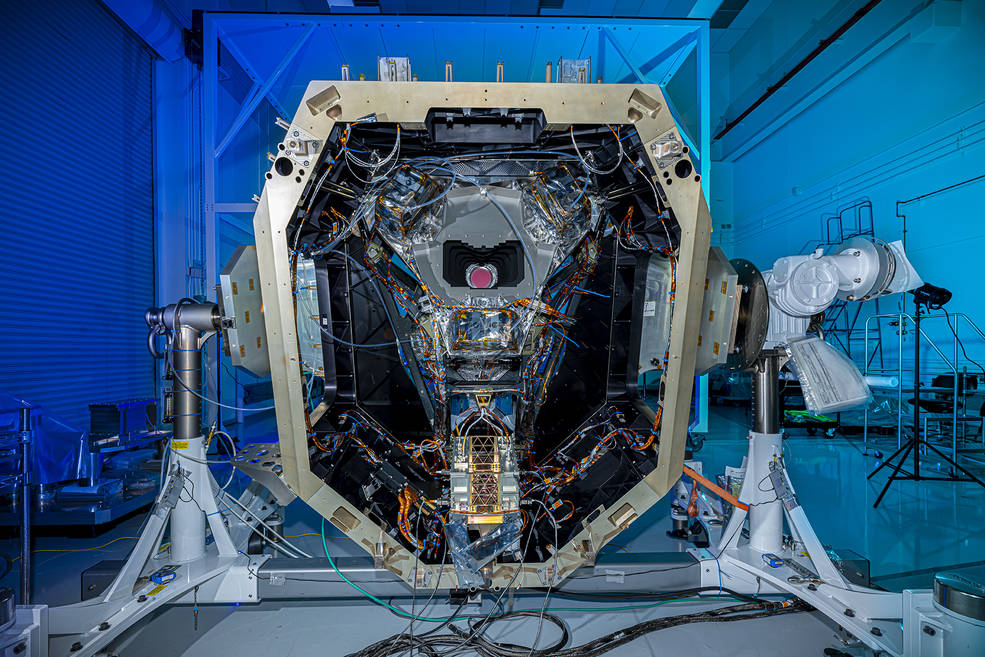If you love space like I love space you will be excited to learn about the Nancy Grace Roman Space Telescope. According to an article on Space.com, it will “…rewind the universe.” It is touted as being more powerful and able to look far deeper into our universe than either the James Webb Space Telescope or the Hubble Space Telescope.
James Webb Telescope
On the website https://roman.gsfc.nasa.gov/, you can view an interactive diagram of this impressive telescope. It begins with a diagram of each side of this instrument, then provides you with a completion status report in brief (there are several locations/organizations participating in this process and you can read up on each and what their specialization in this process is). It is complex and fascinating. For example, there is a part called the Mosaic Plate Assembly, or MPA for short. This is where the detector array is housed. I just looked up what this is and according to https://www.sciencedirect.com/topics/engineering/detector-array, it is where the resolution is processed for images. (perhaps a simplistic description, but the best I could come up with from the very detailed concepts introduced in the article) The detectors collect infrared and visible light from space and turn them into electrical signals which are translated into images. Wow, right? Sort of like a huge camera, I am guessing.
The degree of difference between this telescope and the James Webb or the Hubble is that this one has sixteen million pixels in its extremely sensitive detectors arranged in a wide field imaging camera with over three hundred million pixels allowing it to capture more detail of our solar system and the surrounding galaxies than any ever before.
Electronics relay instructions to the various components and can be fine-tuned for differing observations. It acts as the command center for the telescope and powers the detectors allowing them to conduct data processing and compression.
There is a wheel assembly in the front of the telescope that calibrates its hardware and acts as a filter for the images by tuning the wavelengths of light that are captured by the detectors. Observations change as the wheel turns to allow them to look into supernovae or other galaxies that may help them to better understand dark matter/energy, space warps, and exoplanets. There is a heater in this assembly that keeps the optics at a constant temperature.
The Nancy Grace Roman Space Telescope is slated to launch sometime in the 2020s. According to https://roman.gsfc.nasa.gov/about.html “Roman has a field of view that is 100 times greater than the Hubble infrared instrument, capturing more of the sky with less observing time – {it} will function as Hubble’s wide-eyed cousin..” All of these new technologies are should be able to capture and explore some of the most intricate mysteries of the cosmos mapping how they developed over time and testing Einstein’s general theory of relativity. Furthermore, it will “…have a primary mission lifetime of 5 years, with a potential 5-year extended mission.”
I’m excited to see what Nancy Grace Roman will reveal about Mars, Venus, Pluto, and beyond, as well as, how we can apply that new information to our future space projects. Stay tuned for more.
References:
https://www.sciencedirect.com/topics/engineering/detector-array

